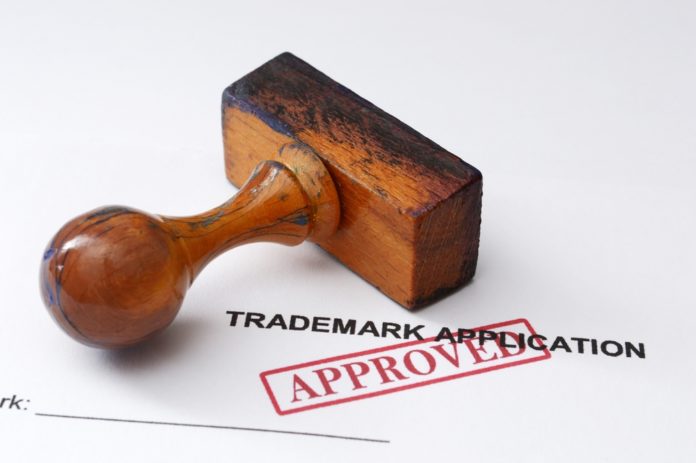Much of the potential success of your brand depends on the choices that you make at the early stages of your project or business. Here are nine tips to enhance and protect your brand.
A simple word or image can trigger a host of sounds, emotions, memories and meanings. What comes to mind when you think of Apple, Glastonbury, Netflix, Nike, PlayStation, Chanel, Alexander McQueen, Harley-Davidson, GoPro or Ray-Ban? Each word communicates different images, feelings and stories, through a simple visual cue.
A brand is essentially a name, logo, or slogan that differentiates you, your services or your products from others and is often the most valuable asset of a business. The GOOGLE and APPLE brands are each estimated to be worth more than $100 billion. COKE is the second most well-known word in the world after “hello”.
Tip 1: Choose Wisely
Select the brand that will best represent you, your business, service or product. The best trademarks are easy to pronounce, stick in people’s minds and become associated with you. The nature of a brand will affect its performance in the market, with its audience, and how broadly it is protected.
The best brands are made-up words or arbitrary words that are not related to the products they represent (such as APPLE for computers). Suggestive words (such as JAGUAR for cars, suggesting elegance and speed) or combination words (such as AIRBUS for airplanes) also work well.
Avoid marks that are purely descriptive of your product or service (APPLE for apples or LOUD for sound speakers). And also avoid marks that could offend.
Tip 2: Do a Trade Mark Search
Once you have chosen a brand, scope things out to see if a similar brand or trade mark already exists to avoid problems and a costly rebrand in the future.
Trade Marks are territorial. So, unless a mark is really well known internationally (think NIKE or MCDONALD’S), a similar mark is only a problem if it’s already registered or used in the country or market that you want to operate in.
If you’re in South Africa, do a few Google searches for your brand by selecting ‘South Africa’ as search criteria and/or including ‘site: co.za’ as a search term. If you want to enter markets internationally, you can do Google searches selecting those countries as search criteria (and their domain extensions).
If you intend to take on the planet, you can also search the freely available official Trade Mark Registers of certain countries or jurisdictions (like the Unites States or the European Union) here.
Unfortunately, in South Africa the Trade Marks Register is only freely available to a limited extent.
Tip 3: Register your Brand as a Trade Mark
A trade mark registration increases the protection and value of your brand, discouraging others from using something confusingly similar. It also allows you to get exclusivity in a brand before having used and gained a reputation in the brand (though you need to use it within five years of registration or it could get cancelled). A registered trade mark is protected for renewable periods of ten years. Once the application is in progress, your brand will show up on the official Trade Marks Register, searchable for all to see. When it’s registered, you can use the ® symbol to signify that it’s registered. Using ® next to a brand that isn’t registered in your country is a criminal offense.
Unfortunately, people don’t realise the benefit of a registration until it’s too late. Remember, a registered trade mark reflects as an asset on your balance sheet – it can be securitised, licensed, franchised and sold.
Tip 4: Use Your Brand
The more you use your trade mark – brand name, logo or slogan – the stronger and more distinctive it becomes and the more your audience is likely to remember your brand, use it and form associations around it. If you don’t use your brand within five (5) years of it having been registered as a trade mark, your mark can be removed.
Tip 5: Police Your Brand
An important ingredient to Oprah’s success (aside from registering her name as a trade mark) was her active and aggressive role against others using the brand or a similar one. Brands become diluted when others use key components of your brand, causing confusion between your goods and/or services and theirs.
If someone is using your mark, or something confusingly similar, the first step to protect your brand is to send a letter of demand stating that you own the mark in question and they must, by law, remove it from their products, services, materials, websites or servers, and pay any financial damage caused to you.
Tip 6: Put Intellectual Property Protection in Your Contracts
Ensure that all your contractors and employees sign agreements that they cannot use your intellectual property themselves. This applies not just to brands or trademarks, but also to any copyright (in images, software code, text, video, music and sound), designs and trade secrets.
Tip 7: Claim Your Online Presence
Buy online real estate featuring your brand, such as domain names, social media handles, and profiles.
It’s best to only use one domain for your company website, but to avoid competition or cybersquatters from taking advantage of you and your business, purchase and park all variations of your branded domains and link them to your primary site. This includes .org and .net versions of your .com or .co.za domain. If you don’t do this and your brand becomes well-known, anyone can buy these domains and try to sell them back to you for an inflated fee, or use them in a manner that may be damaging to you.
Tip 8: Bid on Your Brand (Google AdWords)
Consider protecting your brand on online searches. Bidding on your brand as a keyword (such as on Google AdWords) helps keep your business on the top spot on the first page of search results for your business name.
Competitors will often bid on your keyword too. Google allows it, and in 2016 South Africa’s Supreme Court confirmed that while competitors can bid on a keyword, they cannot use your brand name in content of the ad itself – nor on the page to which the ad links.
Tip 9: Don’t ignore your personal brand
If you develop your personal brand the same way you develop your company’s brand, you’ll have even more visibility and influence over your business’s search results. In many cases (especially when your business is still starting up) your name will be googled more than your company’s name. It’s important for potential investors, clients and employees to find a positive representation of you online. Your online reputation can be the thing that makes or breaks your business.
In a nutshell, a carefully nurtured brand reflects the heart and energy that you invest over years of building a business, cultivating the goodwill and reputation that you earn from your audience.
Consumers develop loyalties to brands for life, and those are passed on down generations and across subcultures, becoming national icons and personal identifiers. A product is often only as good as its brand – and a good brand is worth protecting.





